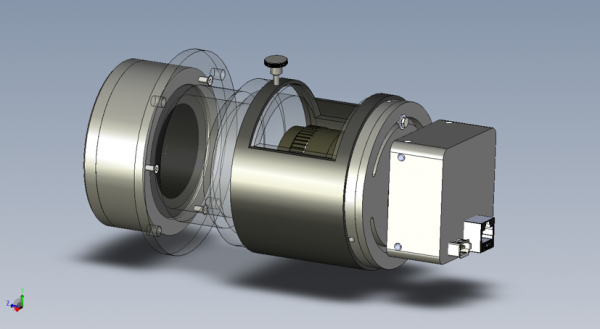Wiki
User Tools
Sidebar
Table of Contents
Image Intensifier Couplings
To guide the image from the phosphor screen of the image intensifier to the CCD camera, two different couplings are used at GSI.
Taper Coupling
The taper coupling was our 'standard' until we had problems with radiation damage of the CCD cameras.
The advantages of the taper coupling are:
- high light transmission
- low image distortion
- compact size
Some details of the taper:
- quartz glass
- magnification 25:14 (10µm>6µm & 6µm>4µm)
- image transferred in same direction (not flipped)
Replacing a damaged CCD is very time- and cost-intensive. Therfore we switched to the relay lens coupling.
Relay Lens Coupling
The relay lens coupling enables flexible change of the CCD camera. But it has some disadvantages:
- less light transmission than taper
- image distortion (esp. on boundaries)
- image is flipped
- size ~15cm longer than taper
Some details of the relay optics:
- Iris: Componon 35/2,8 (Schneider Kreuznach)
- Unifog 12 helical mount
- magnification: 0.6
- distance Phosphorscreen > CCD: 147 mm

Image Intensifier with relay lens coupling

Image Intensifier with relay lens coupling, cut
Technical drawings
Dimensions of the Taper-Coupling
bv_masse_eingangsseite.pdf
Auflagenmaß:
Aussenkante BV - Glasfenster : 9,5 +/-0,5 mm in Luft
Glasfenster - Photokathode: 5,5 mm in Quartzglas mit n=1,558 @400nm
Dimensions of the Relay-Coupling
bv_masse_relaisoptik.pdf

